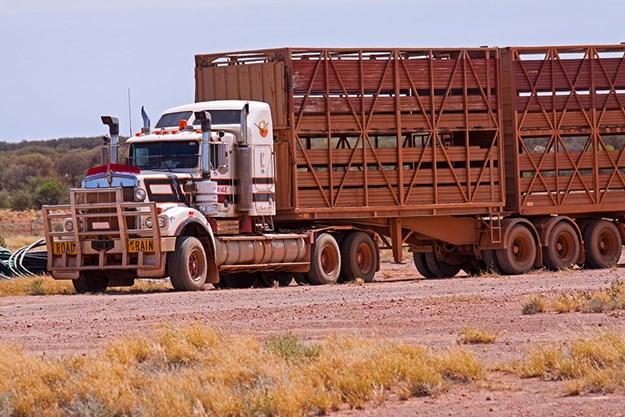OPINION: It has taken loss of lives for the issue of safer ramps and forcing yards to finally get recognition
It was a nice surprise to get a present in the mail on Christmas Eve, a copy of the new ‘Safe Design of Livestock Ramps and Forcing Yards’ from Standards Australia.
Many of you will know I have been on a committee for the last year or more; it’s been a hard slog. It’s only taken 20 years to get the fight to this stage. It’s also taken a very few dedicated people who sometimes get accused of destroying the industry; they stayed the distance to try and make all who work and load livestock safer.
As is often sadly the case, it has taken deaths in the workplace to get enough attention to get things fixed. I personally would like to thank the Victorian Coroner for asking the pivotal question – why is there no ramp standard?
Thanks to the Livestock and Rural Transporters Association of Victoria (LRTAV), our national body the Australian Livestock and Rural Transporters Association (ALRTA) and the Australian Trucking Association for allowing three of us transporter advocates on this journey with Standards Australia.
Farmers were very well represented by former Victorian Farmers Federation Livestock president Leonard Vallance, as well as saleyards, the RSPCA, Animal Angels and all interested parties that wanted to participate. We can actually say in this rare circumstance that all of us were in the room and we’ve got all the perspectives out in the open and managed to deliver something that will help keep people safer.
As far as the future, hopefully this bloody virus will go away or get eradicated and we can get the WorkSafe and National Heavy Vehicle Regulator (NHVR)-type bodies to get out and about again to see what is really going on in our industry. We need visibility at the start and the destination as the common factor for all heavy vehicle operators is loading and unloading issues, whether that be distribution centres, saleyards, farms, warehouses or silos. It’s the conditions, delays and queues and lack of recognition of the person behind the wheel. The worst part of this virus is these issues haven’t been fixed, but they are more easily hidden from scrutiny.
The idea of a ramps and yards standard is that all new facilities like saleyards, abattoirs and farmyards will need to be well constructed and safe, not cheap, dangerous imported crap that is allowed to be brought into our country and then allowed to be sold and used without any checks.
The hard part is to get it into action. There is always another round of government grant money but often is seems to miss the mark. Farmers are getting amazing returns at this time for livestock, many are investing in multi-deck sheep and cattle ramps, but many are not and don’t see the value of safe equipment.
It’s not just about people’s safety. Good infrastructure is undeniably more efficient and much more likely to meet animal welfare obligations. It’s also undeniable that a safe ramp benefits the farmer and animal as much or more than the transporter.
Positive progress
Some good news is the new effluent disposal site at Horsham Livestock Exchange. Another is to be built at Mt Gambier and Warrnambool, with some funding coming from the NHVR, which is great. Mt Gambier is also building two new ramps and installing two more Crate PAL frames to suit road trains. The grapevine tells me there is a stack of new ramps planned for other sites. If the new standard is in any way the reason, then it’s all been worth it.
I want to thank the NHVR for listening to many of us talking about off-route permits, so we can get to farms without getting a $678 fine. The farmers can now get the permit for any transporter that goes to their farm as long as they meet the constraints. It’s a much better option than waiting two months for a permit or risking the fine, which was usually the case for many.
The other issue at the moment is the state of many truck stops and roadhouses. Many are pretty ordinary or closing early or closing off showers and toilets. With the numbers of stock going north from Victoria to places like Tamworth, it’s ridiculous that drivers cannot rely on big fuel providers to access a meal and a shower after they pay for thousands of dollars for fuel. Seemingly these places are happy to cater for tourists and the takeaway trade.
Even with a National Freight Protocol, we need basic human amenities kept open for us or there will be no food or fuel for the tourists or anyone. We need those who make the protocols to ensure they are being met. I don’t know how we fix it but there are a lot of you out there doing the miles, so keep speaking out, sharing the feedback to anyone that will listen.
|
|
*JOHN BEER, with four decades as an owner-operator under his belt, is currently Immediate Past President of the LRTAV and ATA representative in the ALRTA. In addition, John is a past president and life member of both associations. He was the first recipient (2015) of the ALRTA McIver Award for Outstanding Contribution to the Livestock and Rural Transport Industry, and in 2016 was a finalist in the ATA Awards for Outstanding Contribution to the Australian Trucking Industry. John sat on the ATA Council as the owner-driver representative from 2017 to 2019.




